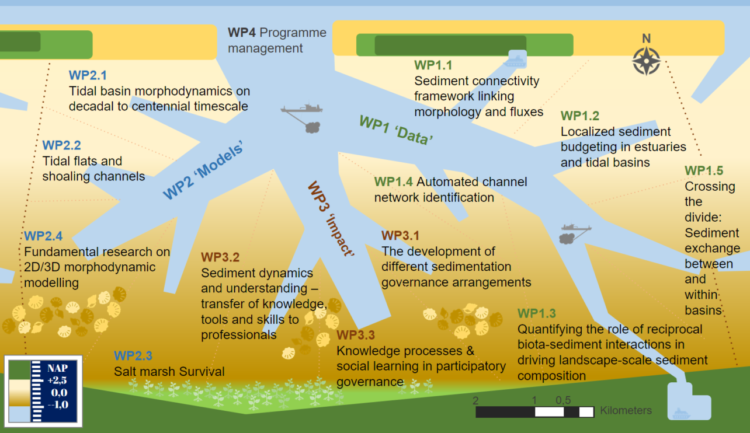Work Package 1 “Data”
Tracing sediment motion through channel-flat systems from data
Pathways of sediment are connected to changes in bed elevation due to sedimentation or erosion and due to channel migration. The sediment budget, where the sediment comes from and goes to, and the timescale over which it is displaced, determine the short-term morphodynamics and the long-term morphological development. Quantifying multi-scale sediment dynamics from data requires sediment budgeting for morphologically meaningful landscape units, e.g. tidal flat complexes, and recognition of natural channels as connections between these units for sediment exchange and as natural boundaries for tidal flat complexes. However, during energetic conditions sediment is also exchanged across the tidal divides, which requires field data and upscaling thereof by modeling. Mud is also an important sediment component and is linked to benthic species. Both mud and biota require hitherto unavailable quantification by dense sampling, covering the entire system.
Projects in Work Package 1 “Data”
1.1 Sediment connectivity framework linking morphology and fluxes
1.2 Localized sediment budgeting in estuaries and tidal basins
1.3 Quantifying how reciprocal biota-sediment interactions drive landscape scale
1.4 Automated channel network identification
1.5 Crossing the divide: Sediment exchange between tidal basins and sub-basins
Discover more in other work packages!

